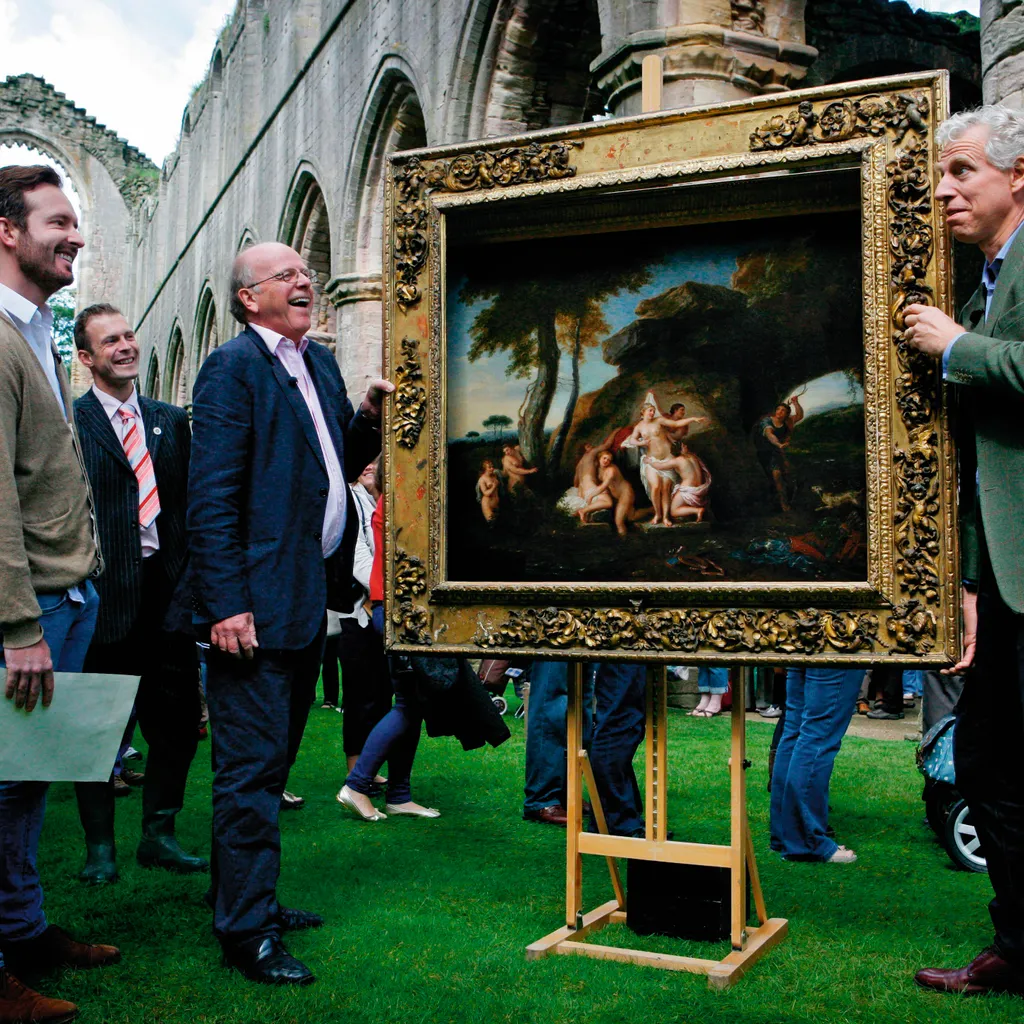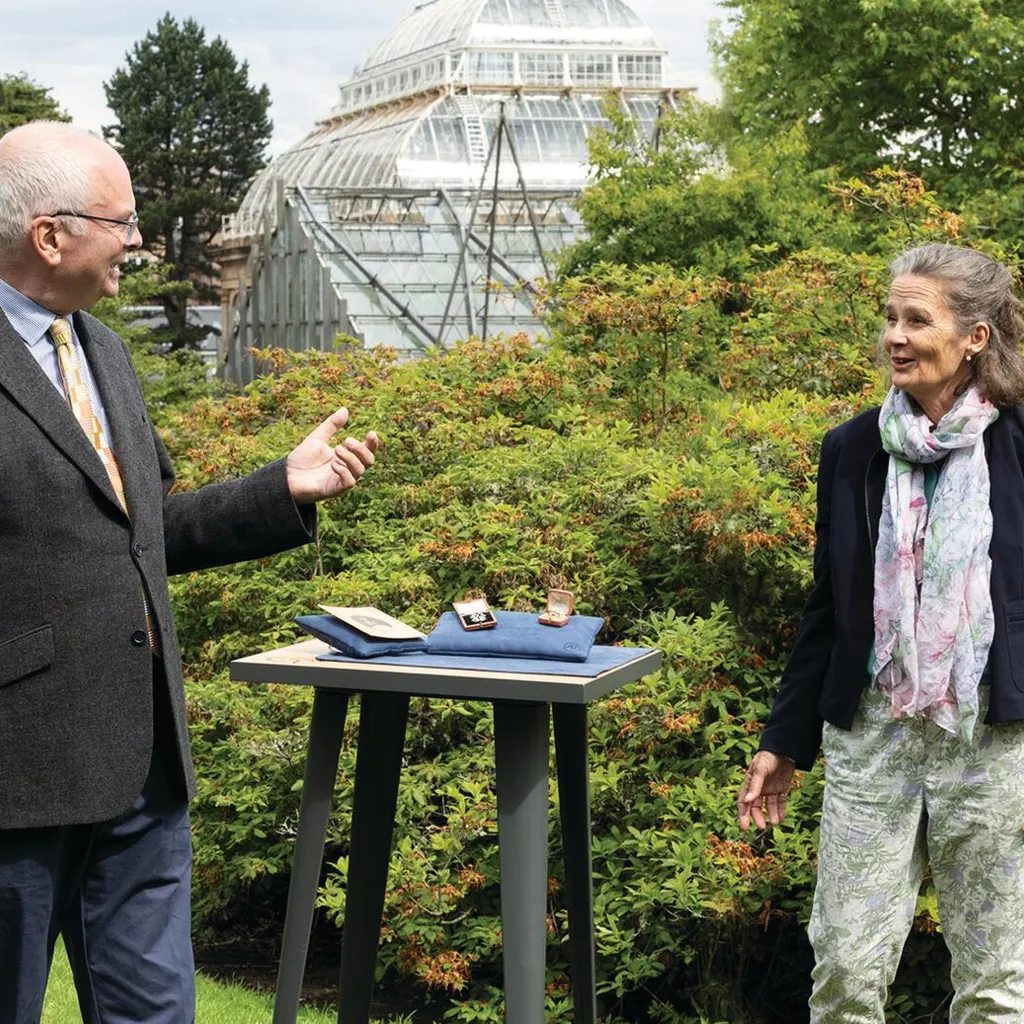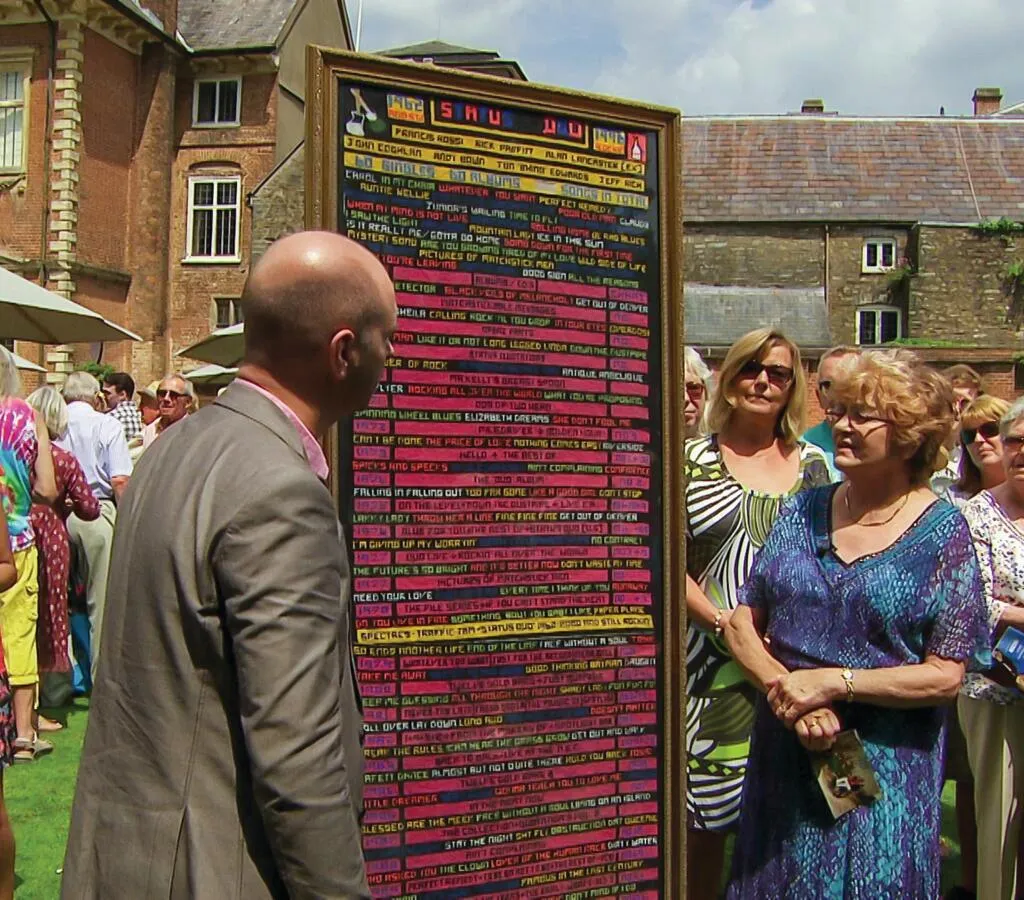At the Royal Botanic Garden in Edinburgh, Fiona Bruce has just finished a piece to camera involving an improbably large papier-mâché fig. Having presented the Antiques Roadshow for 14 years, she relishes such quirky objects. ‘I never thought something like this (the show, not the fig) would come my way, but it has been one of the best and most enjoyable things I’ve done. I love chatting to people, seeing what they’ve brought. Some people bring totally crazy things, and some people bring brilliant things. You never know what’s going to turn up,’ she says.

In the rapidly changing world of television, Antiques Roadshow is seen as something of a miraculous anomaly. Now in its 44th year, the programme still regularly attracts audiences in excess of five to six million. Robert Murphy, series editor, thinks that human interest, combined with the unexpected, are key to its longevity: ‘People love the sense of surprise; the sense that the next box that has come down from the attic could have that incredible, undiscovered masterpiece or a hidden gem. But if you were to strip the format back and analyse it, you realise you get another set of characters, another bit of drama, another mystery, every two or three minutes, so it’s hard to turn over.’
Jeanne Darrington, the show’s recording manager, thinks discovering the monetary value of the items featured is also at the core of its appeal. ‘It fills the niche of desire that we all have to find out that we’ve been rather clever and bought something for tuppence that’s now worth a lot more.’ Tied into this, there may be a darker side to our fascination. ‘When I started, people kept saying they love it when someone comes along thinking they’ve got something really valuable, and it isn’t,’ says Fiona. ‘But I think, more than anything, it’s the serendipity of whether some humble item bought in a boot fair will turn out to be something of great value and the fact it could happen to any of us, so all life is here.’

Unlike most productions, AR, as it’s affectionately termed by the team, functions not just as a popular TV programme, but as a well-run, large-scale public event. Pre-Covid audiences on filming days regularly topped 4,000, with an artful scattering of cute dogs, winsome children and eccentrically outfitted visitors lending a festival feel to the whole atmosphere. ‘It’s often said that it’s a brilliant form of public engagement. It’s what the BBC should be doing. We are taking the world’s great antiques specialists and bringing them to a field near you,’ says Robert Murphy. He prizes the inclusivity of the programme’s format and intends content to reflect cultural diversity. ‘We are representing the country, so the stories we want are the stories anyone can share. It’s not exclusive; you don’t have to have a valuable antique to come on the Roadshow. Some of the stories that touch the viewers most are the emotional ones, like the First World War medal from a Sikh regiment we featured recently. Those stories aren’t as well known as they should be and it’s down to us to bring them to a wider audience.’
The planning of each series begins with the choice of locations. A large map stuck with numerous pins hangs on the wall of the Roadshow office. This and digital versions show where the programme has visited in past years. ‘People associate the Roadshow with stately homes, but in recent years we’ve tried to broaden it out a bit and go to some more unexpected places. So we did one outside the V&A, Dundee; an incredible piece of modern architecture, rooted in the story of Scottish design. Increasingly, my personal view is that we need to find locations that are in the heart of a community, such as The Piece Hall in Halifax and Morden Hall Park in South Wimbledon,’ says Robert.

The logistics of locations are the remit of event manager Caroline De Lane Lea. Is there adequate access for the production crew? Where will visitors park? Can the expert tables fit on the lawn? Is there a team of 45–50 volunteers to help on the day? These are just some of the problems she has to solve. ‘Public spaces such as Cromer Pier and Christchurch Park in Ipswich take the most effort because there are often many stakeholders involved, such as local councils,’ she explains. The day before filming, Caroline briefs the volunteers. ‘I love working with them and want them to enjoy it, understand what’s going on and feel part of it.’
Each location will eventually make two or three programmes and four camera crews are on hand to film the selected 50–70 objects that are needed. Arriving at the right mix of personal story, variety, history and worth is crucial to the final success of a programme. ‘Selection is a complex matrix. Is an item of great value? Is it of great craftsmanship? Do we think that the owner knows nothing about it and it will be a good surprise for them? Do we want to share it with the audience because it opens a window to the past? We are looking for that bit of magic,’ explains Robert.
You might also like:
- Lisa Lloyd & Marc Allum's antiques-filled home
- James Bond bowler hat shocks on Antiques Roadshow
- What to watch on TV if you love antiques and interiors
- 10 antiques you need to own according to experts
- Where to shop for antiques according to experts
- Antiques fairs and auctions around the UK this month
Both technically and in its content, the programme has naturally evolved over the years since its debut in the 1970s. Today, the pace is quicker, personal stories predominate over technical facts, and visual appeal holds sway. ‘We used to film indoors; now we almost never do. We were more formal and buttoned up. Now I’m wearing jeans and experts have thrown off their ties,’ says Fiona.
Geoffrey Munn, the longest-serving jewellery specialist on Antiques Roadshow, has witnessed three decades of progress. ‘There’s a great sense of excitement about what’s coming next. But years ago, there was no internet so you either knew it or you didn’t. It’s dangerous if you don’t really know – because there are two things about cameras: they always reveal if you are playing a part, and they make you look fatter.’

The dialogue between owner and expert is entirely unscripted, so specialists have to decide how to open each discussion. ‘It has always been my premise to paint in the background of the object. I like to say it’s “raising ghosts”. These are sometimes the only footprints in the sand of previous generations, who were just as real and sentient and emotional as we are,’ says Geoffrey. ‘Jewellery can be a bog-standard ring or watch-chain, but if it belonged to Granny or Grandad it turns into an heirloom. And that’s what’s important – we are dealing in heirlooms; souvenirs from the past.’
Inevitably, to survive within Covid safety regulations, the show has undergone dramatic change. ‘The Roadshow is about people turning up, and we couldn’t have people turning up, so how were we going to make it work?’ says Fiona. ‘But the BBC was keen the programme should continue, so the team came up with an ingenious plan.’ Owners were asked to submit objects to the office and those selected for filming were then invited to a given location within a set time slot. ‘Perhaps because people have had plenty of time to tidy the attic, the response has been good, with thousands of submissions for some locations,’ says Robert.
In 2020, contributors to the show were invited to come with their family bubble to fill the back of shots. Last year, as the rules relaxed, numbers have been slightly increased and invited guests are now able to bring something with them to be appraised. ‘When visitors arrive, they meet the experts who, until then, have only seen the item they are expecting to film by email,’ says Jeanne Darrington. ‘Sometimes there are unfortunate surprises: a painting that turns out to be a print, or diamonds that turn out to be paste. We then have to let them down gently.’
For most, however, the pleasure of the day exceeds expectation. ‘Part of its enduring appeal is its British eccentricity; its restraint,’ says Liz Scott, the owner of a silver Guild of Handicraft plate chosen for filming at Edinburgh. ‘Before coming, I practised my poker face,’ she adds. Marc Allum, a miscellaneous specialist on the show for more than two decades, reflects on his association with pride. ‘The programme has an incredible number of imitators. It’s changed, but change is necessary, and it maintains pole position because it was the first and best and still holds a well-deserved crown.’ Meanwhile, Fiona waits impatiently for restrictions on public events to be lifted. ‘We all miss the crowds, the fun of it, the buzz of it. We can’t wait for that to come back.’

The 44th series continues in February on BBC One
